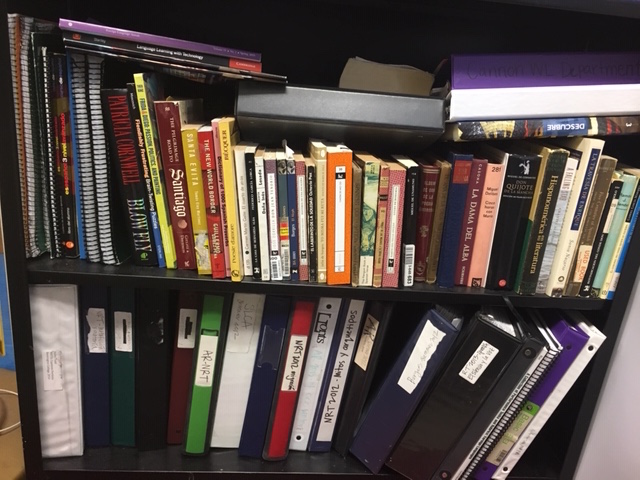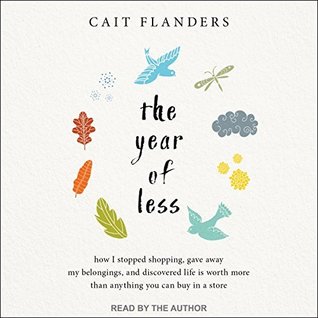
I listened to Happier at Home: Kiss More, Jump More, Abandon Self- Control, and My Other Experiments in Everyday Life by Gretchen Rubin on audiobook from CharMeck Library last month as I continued my January intention to BE A READER. She’s got a series of podcasts as well as a blog and various daily/monthly email newsletter subscriptions if that’s of more interest to you. In addition to sharing her opinion and experiences, she does her research on happiness. I appreciate when a writer cites so many diverse sources. I especially like this section of her blog where she positions herself against those with whom she does not agree regarding the topic of happiness.
Before I dig into the Happier at Home book, first I want to introduce the fundamentals of Gretchen Rubin’s “8 Splendid Truths of Happiness” that come from her prior happiness research for her Happiness Project and her blog.
“8 Splendid Truths of Happiness”
- To be happier, you have to think about feeling good, feeling bad, and feeling right, in an atmosphere of growth.
- One of the best ways to make yourself happy is to make other people happy;
One of the best ways to make other people happy is to be happy yourself. - The days are long, but the years are short.
- You’re not happy unless you think you’re happy.
- I can build a happy life only on the foundation of my own nature.
- The only person I can change is myself.
- Happy people make people happy, but
I can’t make someone be happy, and
No one else can make me happy. - Now is now.
These 8 splendid truths are weaved throughout the Happier at Home book, as well. So it might be helpful to have them as a frame of reference.
In the Happier at Home book, Rubin specifically focuses on how to seek happiness at home. Essentially, she wanted to explore more clearly the question: what did she want from her home?
Her answer: A place that calmed her, and energized her. While Rubin wanted to be happier at home, she also wanted to appreciate how much happiness was already there.
In her website’s own words “starting in September (the new January), Gretchen dedicated a school year—from September through May—to concentrate on the factors that matter for home, such as possessions, marriage, time, parenthood, body, neighborhood.” Rubin dedicated that time to make her home a place of greater simplicity, comfort, and love.
Here was her month-by-month focus:
- September- Possesions- Find a True Simplicity
“We need to project ourselves into the things around us. My self is not confined to my body. It extends into all the things I have made and all the things around me. Without these things, I would not be myself.” —Carl Jung, C. G. Jung Speaking - October- Marriage- Prove My Love
- November- Parenthood– Pay Attention
- December- Interior Design- Renovate Myself
- January- Time– Cram My Day with What I Love
- February- Body– Experience the Experience
- March- Family– Hold More Tightly
- April- Neighborhood– Embrace Here
- May- Now- Remember Now
Some of my favorite resolutions that Rubin creates out of her Happier at Home Happiness Project are:
- Make shrines in your home
- Outer order leads to inner calm
- Give warm greetings and farewells
- Suffer for 15 minutes a day
- Underreact to problems
- View your home like a tourist
I’d recommend this book. It’s not an intense read but it is an interesting one. Caveat: somewhat obvious but if you’re not interested in your home or in your happiness, then you’ll find it of little interest. Sometimes her writing seems to have a lot of platitudes (watch the trailer for the book. You’ll see what I mean. Also, trailers for books? I didn’t realize that was a thing). I do, however, appreciate how she balances those with storytelling and copious amounts of research on the topics she addresses. The book is a personal account from Gretchen Rubin but yet it is relatable and actionable for others.
This interview with the author touches on many of the ideas that stuck with me from listening to the audiobook.
I read this book at a crossroads moment of sorts in my life. During the first few weeks of January, I began to tell my boss and coworkers of my decision not to return to our school for the following school year. My job is not a bad one. Many would consider it a good one and by all conventional metrics, it is. I like going to work on most days. I learn, grow, and laugh each day. Of course, as there can be in any job, there are endless frustrating things about working in a high school setting but none of those things were exactly my reasons for wanting to move on to another, new professional chapter in my life.
When I read this quote from Happier at Home, it helped me bring some clarity to my decision and my ability to articulate it to others:
“I am living my real life, this is it. Now is now, and if I waited to be happier, waited to have fun, waited to do the things that I know I ought to do, I might never get the chance.” – Gretchen Rubin
Essentially I decided I was done waiting for later. My professional life now is good enough, but I needed to heed the call for what was next and do it now rather than continuing to stave it off until later. Simply put, I want to live my chosen life now. Now I will do the things that make me happy, the things that are fun, the things that I know I ought to do– whatever those things may be. Now was now now.
Therefore, my Happiness At Home Project, Happiest en Casa, is set to commence in June 2019. For teachers, June always brings a sense of renewal. It’s a chance to catch your breath, commit to yourself first again. These luxuries are seldom lived out in the hectic 180-day sprint of the school year. And this June, in particular, I am recommitting to me, to my family, to my life. Therefore, my Happiest en Casa project will be somewhat about my home and my physical space but it will also revolve around “being at home” as a first time stay-at-home mom.
Here is my current plan for my month-by-month focus:
- June- My Neighborhoods— Go On (local) Adventures
- July- Frugality— Go On A Budget for Living & Cooking (in particular)
- August- Community Connections— Go In Service to Others
- September- Health— Go Exercise & Rest
- October- Celebrations & Traditions— Go Celebrate & Keep it special, simple, & fun
- November- Gratitude— Go Give Thanks
- December- Mindfulness & Meditation — Go Be
- January- Parenthood — Go Play
- February- 2nd Career— Go Plan
- March- Our Marriage— Go Connect
- April- Our Food– Go Garden
- May- Our Things– Go Purge, Fix, Clean
“The true secret to happiness lies in taking a genuine interest in all the details of life.” — William Morris, “The Aims of Art”
I look forward to discovering all the details of daily life in this upcoming stage. I am eager to get started on this project but will have to temper that energy for a few more months.
Happier at Home’s last page includes a quote from Laura Ingalls Wilder’s work, Little House in the Big Woods, and the book ends with these words:
“As I turned the key and pushed open the front door, as I crossed the threshold, I thought how breathtaking, how fleeting, how precious was my ordinary day. Now is now. Here is my treasure.”
I hope that 365 days from June 1, 2019, I will reflect on my year at home and consider it, and my home– and everything and everyone in it, a treasure. Here’s to setting goals, tracking how it all turns out, and then telling the story.
Happiest en Casa. Stay tuned.










